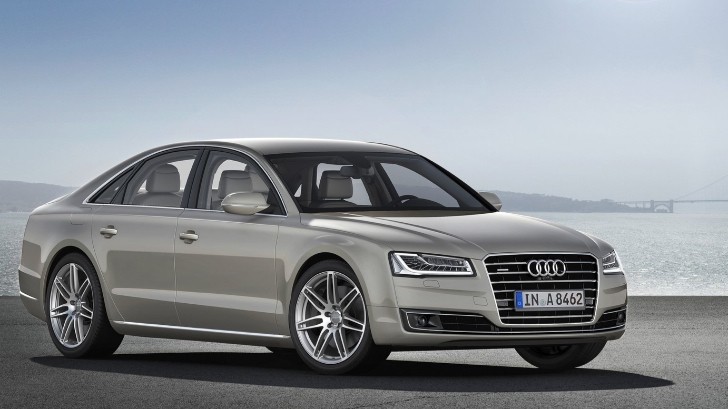Audi has just released a facelift for the A8 model range, including for the A8 L and the S8, but we're going to skip the cosmetics for a second and focus first on the stuff which we thing people really wanted.
Audi is usually conservative with its facelifts, but for the A8 they basically gave more power on many models.
The first thing that caught our attention is the mention of a supercharged 3.0 TFSI with 228 kW (310 hp metric or PS). Up until now, the most powerful version of the 3.0 TFSI offered on both wheelbases was the 290 PS unit.
Audi also seems to have given the 3.0 TDI a small tweak from 250 PS to 258 PS. Speaking of performance and diesel, the 4.2 TDI clean diesel, which used to offer 350 PS and 800 Nm now has a 385 PS and 850 Nm setup. We find this to be the most interesting, because it means the 4.2-liter diesel V8 is more powerful than the older 4.2-liter petrol V8, the FSI.
Performance has increased with most engines. When paired with quattro all-wheel drive, the 4.0 TFSI now accelerates the A8 from 0 to 100 km/h (62.14 mph) in 4.5 seconds. Before, the 4.0 TFSI came with 420 PS and required 4.7 seconds to push the car to 100 km/h. Under partial load, the Audi cylinder on demand (COD) system deactivates four of the eight cylinders.
Do you think a V8 twin-turbo with cylinder deactivation is strange? What about this: the A8 L W12 quattro, equipped with a massive 6.3-liter 500 PS engine, also has cylinder deactivation. As a result, the biggest Audi engine out there only drinks 11.7 liters per 100 kilometers (20.10 US mpg), corresponding to 270 grams CO2 per kilometer (434.52 g/mile).
The cleanest engine in the new A8 range is of course the 3.0 TDI with 5.9 liters per 100 km. But there's also a hybrid that comes close. The A8 hybrid uses a 2.0 TFSI and an electric motor to produce system output of 245 hp. This model can go up to 100 km/h in pure EV mode and consumes on average just 6.3 liters of fuel per 100 kilometers (147 grams CO2 per kilometer.
The first thing that caught our attention is the mention of a supercharged 3.0 TFSI with 228 kW (310 hp metric or PS). Up until now, the most powerful version of the 3.0 TFSI offered on both wheelbases was the 290 PS unit.
Audi also seems to have given the 3.0 TDI a small tweak from 250 PS to 258 PS. Speaking of performance and diesel, the 4.2 TDI clean diesel, which used to offer 350 PS and 800 Nm now has a 385 PS and 850 Nm setup. We find this to be the most interesting, because it means the 4.2-liter diesel V8 is more powerful than the older 4.2-liter petrol V8, the FSI.
Performance has increased with most engines. When paired with quattro all-wheel drive, the 4.0 TFSI now accelerates the A8 from 0 to 100 km/h (62.14 mph) in 4.5 seconds. Before, the 4.0 TFSI came with 420 PS and required 4.7 seconds to push the car to 100 km/h. Under partial load, the Audi cylinder on demand (COD) system deactivates four of the eight cylinders.
Do you think a V8 twin-turbo with cylinder deactivation is strange? What about this: the A8 L W12 quattro, equipped with a massive 6.3-liter 500 PS engine, also has cylinder deactivation. As a result, the biggest Audi engine out there only drinks 11.7 liters per 100 kilometers (20.10 US mpg), corresponding to 270 grams CO2 per kilometer (434.52 g/mile).
The cleanest engine in the new A8 range is of course the 3.0 TDI with 5.9 liters per 100 km. But there's also a hybrid that comes close. The A8 hybrid uses a 2.0 TFSI and an electric motor to produce system output of 245 hp. This model can go up to 100 km/h in pure EV mode and consumes on average just 6.3 liters of fuel per 100 kilometers (147 grams CO2 per kilometer.







